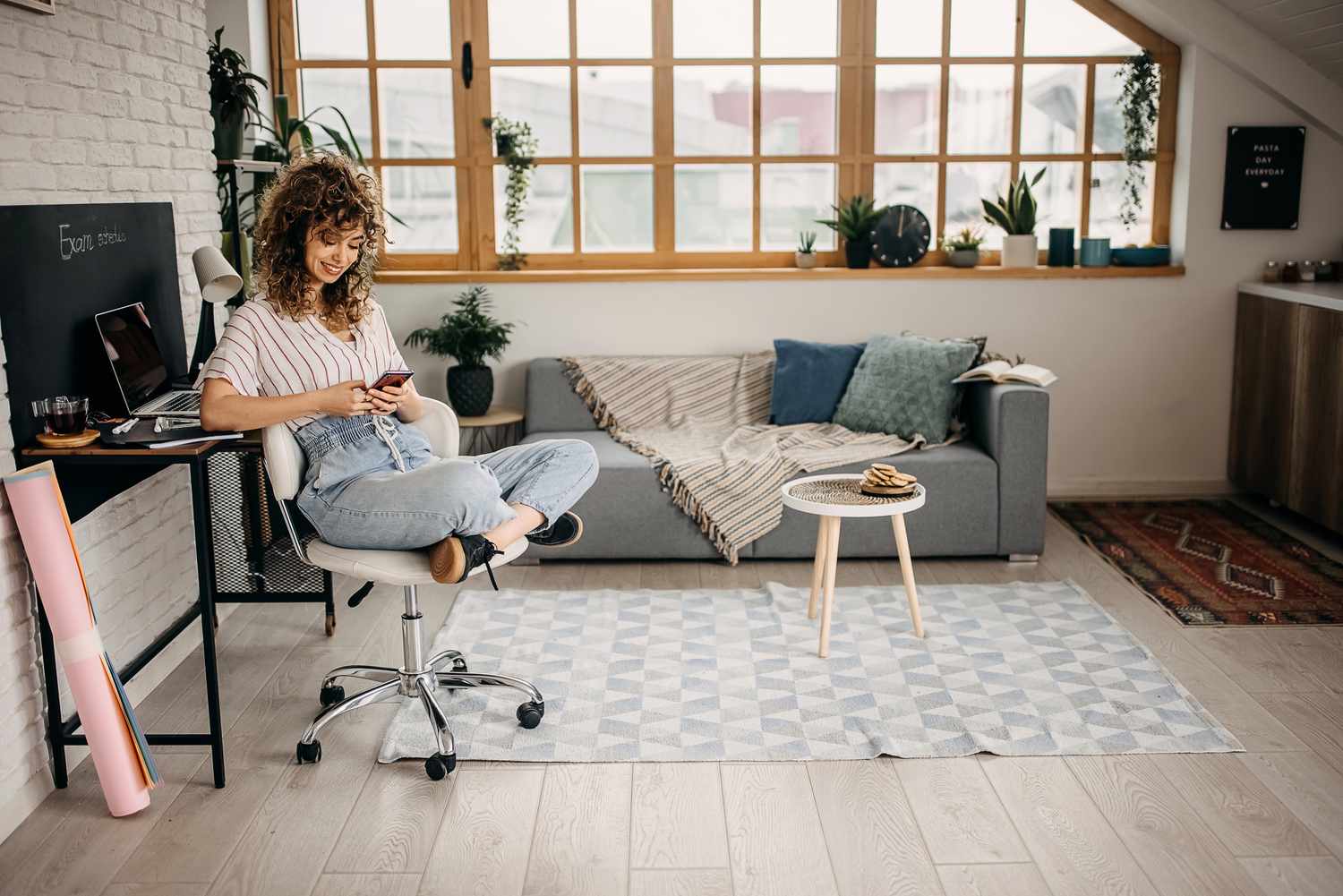What is 'Office Chair Butt'? The Impact of Prolonged Sitting on the Appearance and Health of Your Glutes

'Office chair butt' is the latest concern to your health—specifically your glutes—picking up steam on TikTok.
The term has been sparking widespread discussion amongst content creators, who are speculating about whether sitting at work can cause a decline in the strength and appearance of a person's glutes.
TikTok user Alexandra posted a video in early July warning her followers about office chair butt—it's since gained over 7 million views.
'Just found out about office chair butt so I will be using the standing desk feature for all 8 hours every day,' she wrote.
In another video that has over 2.6 million views, a TikToker named Itzel called office chair butt her 'new fear.'
But is office chair butt something people should actually be concerned about? Here's what experts had to say about how sitting frequently affects your body, and how to keep your muscles healthy while working your 9-to-5.
Office chair butt is a common phrase that really doesn't have a true medical meaning or definition, Evan Johnson, DPT, director of Och Spine Care Outpatient Physical Therapy at NewYork-Presbyterian, told Health.
However, sitting for prolonged periods of time can certainly affect your butt.
“By sitting in a chair for hours, days, weeks, and years like many of us do, we neglect our glutes and they can become very deconditioned and lose muscle mass as a result,” Andrew Bach, DO, physical medicine and rehab specialist at Cedars-Sinai. told Health.
When the body is sedentary, muscles—including the glutes, but also the deltoids, pectorals, hamstrings, and more—aren't engaged or working, Bach said. Over time, this can cause them to weaken. Weakened muscles can also be infiltrated by fatty tissue, Johnson added, making them less resilient.
Excessive sitting can also cause muscles to have an altered appearance, said Johnson. People might notice office chair butt in particular when their gluteus maximus—which has the largest cross-sectional area, or muscle volume, in the body—starts to decline.
“Sitting on the muscle all day and not exercising it results in the muscle losing tone and eventually shape,” Johnson said. “This can result in a flat butt appearance or a very soft, fleshy butt if muscle is replaced with adipose tissue [or] fat.”
Excessive sitting can also cause muscles to shorten or tighten, Bach added, changing our appearance.
'The effect is that our bodies tend to mold into the shape of our chairs,' he said.
Luckily, sitting for prolonged periods of time doesn't usually harm your glutes directly, Johnson said. However, weak gluteal muscles can lead to problems over time, including strain on other muscles in the thigh and back.
Technically, if someone were to sit in the same position for a long time, it's possible that their butt bones could put too much pressure on the gluteal muscles, said Bach. However, this is quite rare.
“This is how a pressure wound happens,' he said. 'The good news is that the average person shifts their weight every few minutes, typically without even thinking about it, to avoid this from happening.'
Otherwise, if someone is experiencing pain from sitting for long periods of time, they might have what some people call 'dead butt syndrome,' rather than office chair butt.
Pain deep in the butt from sitting could be caused by sciatica or tendinopathy (tendon injury) in one of the other gluteal muscles—the latter is 'commonly referred to as 'dead butt syndrome,'' said Johnson.
But 'dead butt' can also refer to gluteal amnesia, or issues with your muscles' ability to contract due to prolonged sitting, Bach added.
“Muscle activation is easier the more you do it,' he said. 'If you are sitting down all day, you are not activating your muscles and the effect can be that when you do use them, they might not be as reliable as before.'
This 'dead butt' weakness can come with numbness, tingling, and pain, Bach added. If you're experiencing these symptoms, he recommended speaking with a healthcare provider.
Anyone who sits for prolonged periods of time—including those in sedentary jobs—is at risk of developing office chair butt, Bach warned.
In particular, women may be more likely to get office chair butt, as they're more likely to work jobs that require them to sit all day. The same goes for older and middle-aged people, Johnson said, who have collectively spent more hours sitting at work.
“Additionally, with age, we tend to lose muscle flexibility and tone unless we work to counter that process with exercise,” he said.
But like many chronic health conditions, office chair butt is avoidable, Johnson said. The best way to prevent it is simply to stay active and activate your glutes regularly throughout the day.
That could mean getting up regularly from your desk, walking your dog, or taking the stairs at the office.
You may also want to use a standing desk to avoid the negative effects of prolonged sitting at work, Bach added. If you don't have a standing desk, you can activate your muscles while you're seated by doing glute squeezes or calf raises every 15 minutes or so, he advised.
Outside of the office, there are also specific exercises you can do to strengthen your glutes, including bridges, clamshells, squats, and step-ups, said Johnson. However, proper form is important to avoid faulty movement patterns.
“If you don’t know how to do these exercises properly, it is a good idea to schedule a few sessions with a healthcare provider to review proper form,” Johnson added.
In the end, practicing a few healthy behaviors can help people 'reap the benefits of a stronger and shapelier behind,' he said. 'That said, it is worth celebrating the inherent differences of shape and size of individuals. The goal is to promote great health, self-esteem, and fitness—not to body shame.'




